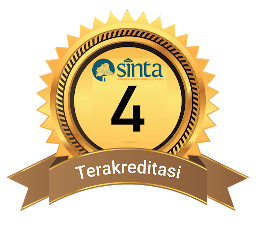Pengaruh Model Pembelajaran Kooperatif Tipe Student Facilitator and Explaining Berbantuan Metode Demonstrasi Terhadap Hasil Belajar Kimia
DOI:
10.29303/cep.v1i1.882Published:
2018-11-06Issue:
Vol. 1 No. 1 (2018): MeiArticles
Downloads
How to Cite
Abstract
Penelitian ini bertujuan untuk mengetahui pengaruh model pembelajaran student facilitator and explaining berbantuan metode demonstrasi terhadap hasil belajar kimia pada materi pokok larutan elektrolit dan nonelektrolit pada siswa kelas X IPA SMAN 1 Pringgarata. Desain yang digunakan adalah quasi experimental dengan rancangan posttest only control group design. Populasinya yaitu seluruh siswa kelas X IPA SMAN 1 Pringgarata yang terdiri dari tiga akelas, dengan jumlah total siswa 89 orang. Teknik pengambilan sampel yang digunakan adalah random sampling. Sampel terpilih yaitu kelas X IPA 2 sebagai kelas eksperimen yang diberi perlakuan model pembelajaran kooperatif tipe student facilitator and explaining berbantuan metode demonstrasi dan kelas X IPA 3 sebagai kelas kontrol yang diberi perlakuan model pembelajaran konvensional. Berdasarkan hasil uji hipotesis menggunakan uji-t diperoleh thitung sebesar 2,36 dan ttabelsebesar 2,00 (thitung>ttabel ) pada taraf signifikan 5% sehingga Ho ditolak. Hal ini berarti penerapan model pembelajaran kooperatif tipe Student Facilitator and Explaining Berbantuan Metode Demonstrasi memberikan pengaruh yang lebih baik terhadap hasil belajar kimia pada materi pokok larutan elektrolit dan nonelektrolit kelas X SMAN 1 Pringgarata.
Author Biographies
Rohaini Rohaini, Program Studi Pendidikan Kimia, FKIP Universitas Mataram
Wildan Wildan, Proram Studi Pendidikan Kimia FKIP Universitas Mataram
Aliefman Hakim, Program Studi Pendidikan Kimia, Universitas Mataram
License
Authors who publish with Chemistry Education Practice agree to the following terms:
- Authors retain copyright and grant the journal right of first publication with the work simultaneously licensed under a Creative Commons Attribution License 4.0 International License (CC-BY-SA License). This license allows authors to use all articles, data sets, graphics, and appendices in data mining applications, search engines, web sites, blogs, and other platforms by providing an appropriate reference. The journal allows the author(s) to hold the copyright without restrictions and will retain publishing rights without restrictions.
- Authors are able to enter into separate, additional contractual arrangements for the non-exclusive distribution of the journal's published version of the work (e.g., post it to an institutional repository or publish it in a book), with an acknowledgement of its initial publication in Chemistry Education Practice.
- Authors are permitted and encouraged to post their work online (e.g., in institutional repositories or on their website) prior to and during the submission process, as it can lead to productive exchanges, as well as earlier and greater citation of published work (See The Effect of Open Access).






